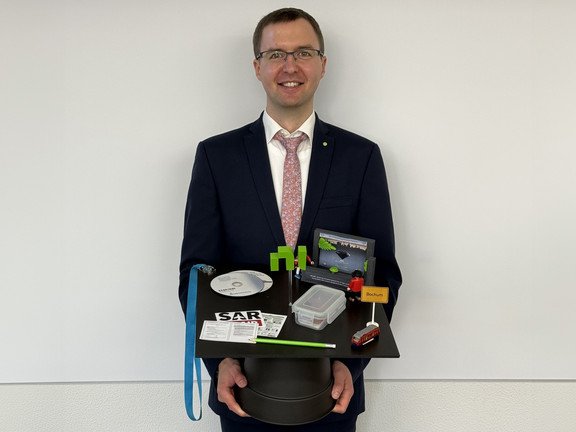25th PhD thesis at CNI: mmWAVEs pave the way towards 6G
- News
- Type
- News
- 6GEM

The CNI team congratulates Dr.-Ing. Karsten Heimann on the successful defense of his dissertation entitled "Design and Evaluation of Millimeter Wave Communication Services in Mobile Environments".
With the introduction of 5th generation mobile networks (5G), new frequency ranges in the millimeter wave spectrum (around 26 GHz) were opened up in order to provide very large bandwidths for future applications. While millimeter waves have been used for some time for static scenarios (so-called fixed wireless access FWA), the mobile use of this frequency range is associated with major challenges: due to the high attenuation of the radio field, strongly focussing antennas are used, whose beams generated in this way must be dynamically carried along with the movement of the terminal device in the mobile case.
Using a sophisticated laboratory system available at a very early stage, his work is strongly characterised by experimentation, whereby he also includes system simulation. By combining the experimental setup with system models, the conception and realisation of a new type of digital twin, which controls the antenna alignment in real time, forms a core innovation of the work presented. In this respect, the work presented by Karsten Heimann points beyond 5G in the direction of future 6G systems and makes a significant contribution to making millimeter wave systems practically usable in mobile environments in the future.

